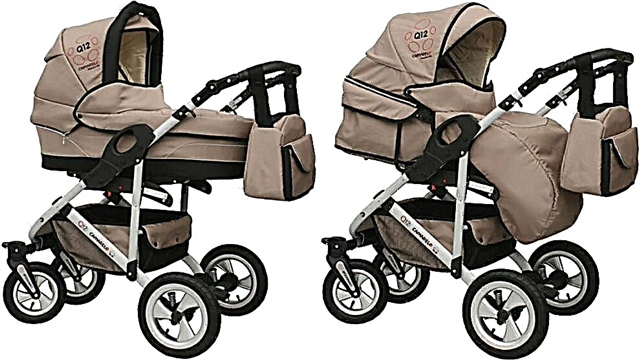 Almost every young mother who decides to breastfeed her baby is faced with a choice: what approach to feeding should she follow? The older generation, represented by grandmothers, adult relatives and some doctors, insist that the child should suckle on the breast every hour. However, information constantly comes from the Internet and other sources that the baby should receive mother's milk at the first request. What to choose: breastfeeding on demand or by the hour? Let's try to understand what is the essence of both approaches.
Almost every young mother who decides to breastfeed her baby is faced with a choice: what approach to feeding should she follow? The older generation, represented by grandmothers, adult relatives and some doctors, insist that the child should suckle on the breast every hour. However, information constantly comes from the Internet and other sources that the baby should receive mother's milk at the first request. What to choose: breastfeeding on demand or by the hour? Let's try to understand what is the essence of both approaches.
Feeding by regimen or by hour
We read useful articles on the topic:
- Breastfeeding tips for a nursing mom (mega useful article!)
Once every 3 hours
Hourly feeding is a relatively modern invention. This feeding system appeared in the post-war Soviet era, when women, barely becoming mothers, were forced to go to work. Given the conditions of that time, it was just a vital necessity, and since the work schedule could not be adjusted to the needs of the child, we had to do the opposite: adjust the child to the mother's schedule.
In this approach, the baby is breastfed at three hour intervals and suckles for a maximum of 20 minutes. At night, the break between feedings is 6 hours.
There are not many advantages to feeding by the hour, but still something can be distinguished:
- Together with feeding by the hour, a clear daily routine is built. It turns out that the mother knows exactly at what time the baby will suckle the breast, and at what time it will be free. You can plan your day and time away from home.
- When the baby adjusts to this feeding schedule, the mother will have quieter nights.
The disadvantages of such a feeding system both for the nursing mother herself and for the baby:
- Babies can hardly endure such long breaks without a breast, so in the event of screaming, they will have to show persistence and be ready to distract the child, occupy him with something, and switch attention.
- In different feedings, the baby can breastfeed with different intensities, so in 20 minutes he can receive a different amount of milk each time. This leads to the fact that in some of the attachments the child will not eat enough, which means that he will gain less weight and will have to be supplemented with a mixture.
- Mom is more likely to have breast problems. If the breast is not emptied in time, it overflows, which leads to such an unpleasant process as lactostasis (stagnation of milk in the ducts). This is a very painful condition accompanied by a high fever. Sometimes you have to turn to specialists for help, because you can't “straighten” your breasts on your own.
- The most dangerous consequence of hourly feeding is the extinction of lactation. Milk production depends on the level of the hormone prolactin in the blood. This hormone is produced in response to sucking, so the more the baby sucks, the longer the woman feeds. If breast stimulation is insufficient, less and less milk will be produced. Especially dangerous is the lack of prolactin in the first months, when lactation is just getting better. In the days when hourly feeding was the accepted pattern, most women fed for no longer than 6 months.
- From a psychological point of view, feeding by the clock is also not useful for the baby. It turns out that the mother ignores the child's needs, denying him the opportunity to breastfeed at the first cry. The sucking reflex of the child is only slightly satisfied, and this can form the habit of thumb or fist sucking.
At the first cry
Demand feeding is often regarded as a modern trend, but this approach is much older than hourly feeding. Moreover, it is not artificially designed. Feeding on demand is also called natural feeding, since this method of breastfeeding developed naturally during the formation of a person.
Ancient women did not know the regime and did not try to decide for the child when he should eat. The baby was almost always on the arms of the mother, so getting a breast was not a problem for him.
There are no complicated rules for breastfeeding: the baby literally gets a breast for every cry and is at the breast for as long as he wants. The same principle applies to night feedings. By the way, for lactation, night feeds are simply necessary, since an increased production of prolactin occurs at night.
The best feeding regime for a newborn - Dr. Komarovsky
While on-demand feeding is a natural way to feed babies, modern women do not always find it comfortable. For a modern mother, the following disadvantages can be distinguished:
- Until the baby begins to eat from the common table and breast milk ceases to be his main food, the mother always has to be prepared to postpone things for the sake of feeding the baby or feed in an inconvenient place, because the baby can scream in the store, transport or street. Of course, today there are special clothes and underwear for nursing mothers that allow them to feed unnoticed. However, given the level of development of the culture of breastfeeding in our country, not every woman decides to feed her baby in a public place.
- Since the time spent at the breast is also determined by the child, it may happen that it is your baby who will love to sleep with the breast in his mouth (as many children do), chaining his mother to one place for a long time.
- Babies who are breastfed are more likely to wake up at night, and the mother has to either constantly get up to the bed or take the baby to the parent's bed, which is not acceptable for everyone.
- The issue of weaning is very difficult for many mums. If, in the case of hourly feeding, lactation almost always stops itself ahead of time, then when feeding on demand, the mother either deliberately weans the baby when she decides for herself, and this is often a painful procedure, or feeds to self-weaning, which can occur even after 2 years ...
Although there are drawbacks to this approach, they are not so significant. All negative moments are more than eliminated and it depends, rather, on the mother's own mood than on some objective reasons.
But the advantages of on-demand feeding are very significant and it is not wise to neglect them.
- If the baby is breastfed, there is no need to worry about weight gain and harmonious physical development, because the baby is guaranteed to receive all the necessary nutrients.
- Such babies are much less likely to have tummy problems, since breast milk is a completely adapted food for an immature baby's gastrointestinal tract. Babies who receive breasts on demand do not need to be supplemented with water and fed early, so their intestines work better and do not cause problems for either the child or the parents.
- For a mother, breastfeeding is an excellent prevention of possible breast problems. Since the breasts are emptied in a timely manner, the risks of lactostasis are minimal.
- Lactation is established without problems, which means that a shortage of milk does not threaten anyone and the mother can feed the baby for as long as she wants.
- Breastfed babies can do without a pacifier. There is no need for it, since the sucking reflex of the child is completely satisfied by the sucking of the mother's breast. Considering that there is no consensus on sucking a pacifier, and it is still a foreign object for a child, the ability to refuse a pacifier is a big plus.
- In general, babies who receive breasts on demand grow calmer and more confident. Their needs are not ignored, they know that they can always get what they need from their mother.
It is safe to say that feeding on a schedule (or hourly) is rather a relic of the past, and at present this approach is significantly inferior to feeding on demand. The overwhelming majority of modern mothers have the opportunity not to go to work a few months after the birth of a baby, so it is not at all necessary to introduce a strict feeding regime.
From the point of view of the baby himself, on-demand feeding is natural and harmonious, as provided by nature. With a good mood for motherhood and childcare for a woman, such a system also becomes convenient.



